September Program Highlights: Six Mining Localities in Eastern Canada
Presented by Quintin Wight
Overview by Andy Thompson, MSDC Secretary
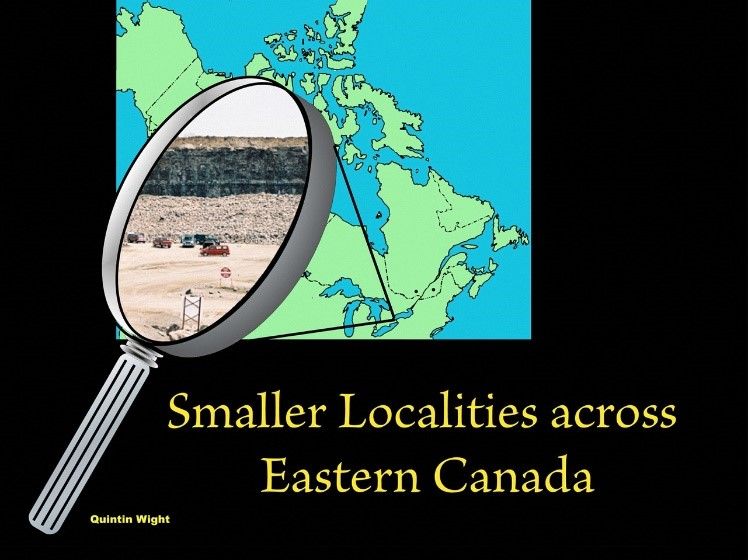
Our presenter for MSDC’s September program was Quintin Wight, well known for his work with microminerals and author of The Complete Book of Micromounting, published in 1993. Among his many contributions to mineralogy are his discovery of several new minerals. For those discoveries, he was honored by having a newly discovered mineral, quintinite, named after him.
His encyclopedic knowledge of minerals has made him in great demand as a lecturer. As a result, he said he preferred that MSDC’s newsletter publish only a few brief notes on his talk. “I want to respect the desire for future clubs and audiences who may ask me to give this same talk to be curious about its content.” Respecting this desire for brevity, MSDC did not record the program and our Mineral Minutes overview here publishes only five of the more than 100 slides he used to illustrate his excellent, well-paced presentation.
As an historic footnote, Quintin, when stationed in Washington, DC as a Canadian liaison to the U.S. military, was a member of MSDC.
Quintin’s presentation focused on six mining areas which he described as “chapters,” telling the story of six smaller mining localities, shown on the map below. His focus stretched from the Silurian Lockport dolomites of Niagara Falls, northeast, to the zeolites of the Bay of Fundy.
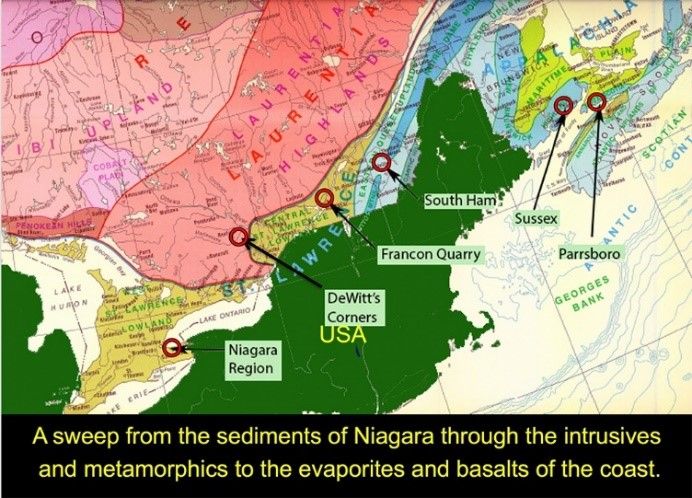
Designated by the six red circles in the map above, the six mining sites, or chapters, include:
(1) the Silurian hard dolomite sediments over which the Niagara River flows;
(2) the Ontario Precambrian of DeWitt’s Corners where Quintin discovered the first appearance of magnesiohogbomite in Canada;
(3) the Cretaceous Ordovician limestone of the Francon Quarry in Montreal city where collectors find the short, white, tabular “most interesting” micromineral Dawsonite shown in a photo below;
(4) the Upper Cambrian/Lower Ordovician Lac Nicolet antimony mine in the South Ham region;
(5) Sussex, a carboniferous region where evaporating seawaters caused changes in its minerals, mainly boron deposits, found in three major mines: Clover Hill, Millstream, and Penobsquis; and
(6) Parrsboro, at the Atlantic Ocean and Bay of Fundy, rich in zeolites.
Another fascinating and explanatory portrait of Quintin’s sweep of these six smaller mining regions is found in his bedrock illustration, “Chapter 1,” below, which describes the regions’ four underlying rock formations.
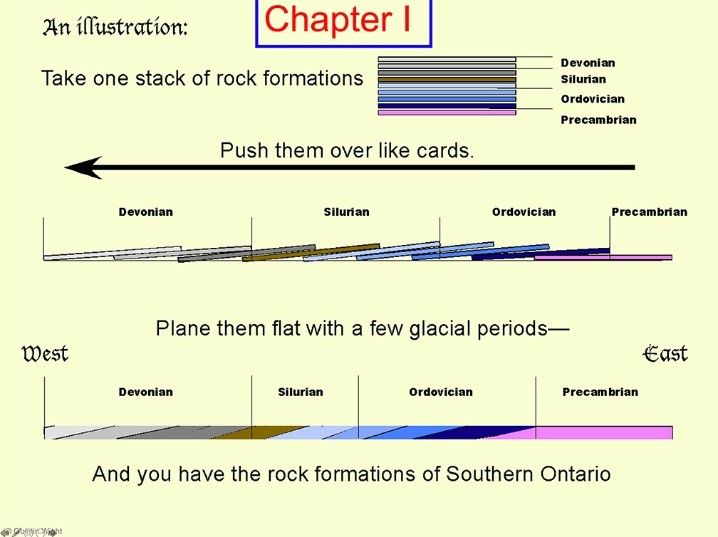
One of Quintin’s favorite minerals, dawsonite, shown below, is a type locality mineral found in the Francon Quarry, located in the middle of the city of Montreal, Quebec.
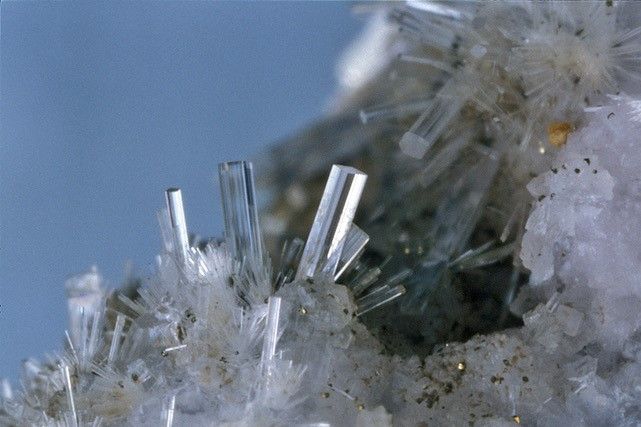

Kermesite, in the photo below, is a rare, delicate, and spectacular antimony mineral found at Lac Nicolet, South Ham, the 4th of six sites.
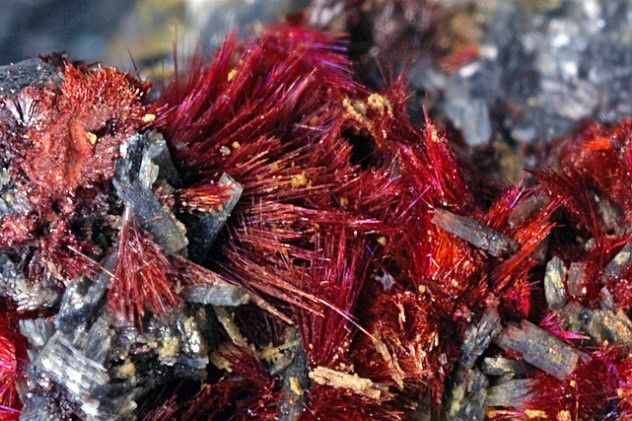
Imagine seeing over one hundred stunning PowerPoint illustrations that Quintin put together, often with the assistance of his wife, Willow, for educating the mineral community. The abbreviated summary here is, of course, only an intriguing taste of what mineral clubs have to look forward to when they invite Quintin to make a presentation. “Bon Apatite.”
Dave Hennessey thanked Quintin for his wonderful presentation and the Zoom attendees seconded his appreciation with applause.
Q & A
Dave then asked if there were any questions for Quintin, and indeed there were. Their content ranged from:
1) Whether having a micromount specimen in powder or mineral form caused any problems (it did not, Quintin responded);
2) Peculiar aspects of the Mont Saint Hilaire collecting site, with which some MSDC members were familiar and appreciated because of an earlier caravan field trip some members had made;
3) How Quintin, seeming with limited formal geological and academic training, had been able to drill down and acquire deep knowledge of minerals (had many international work-related assignments which allowed him to acquire first hand experiences);
4) Curiosity about whether Quintin discovered quintinite (no; rather, he had discovered 3.5 minerals at the Mont Saint Hilaire collecting site in Quebec and when this new mineral was identified, those involved decided to name the new mineral in his honor as a thanks for all his contributions to collecting in that area); and
5) Many personal expressions of gratitude for his presentation (“you’re welcome”)
Show & Tell
Dave then asked if any attendees brought in specimens to share and here are a few examples:
1) Dave N brought in two specimens, several apatite from Wakefield, Quebec and seranite from Mont Saint Hilaire
2) Jeff brought up a few boxes of minerals he collected from Nova Scotia, including stilbite, zeolite and numerous agates, as well as Canadian specimens he purchased at the Northern VA mineral show
3) Dan and Sean showed stilbite minerals and bear fossils whose collecting was difficult due to tides
Dave Hennessey then again thanked Quintin for his excellent program and thanked everyone for attending the club’s September meeting.
